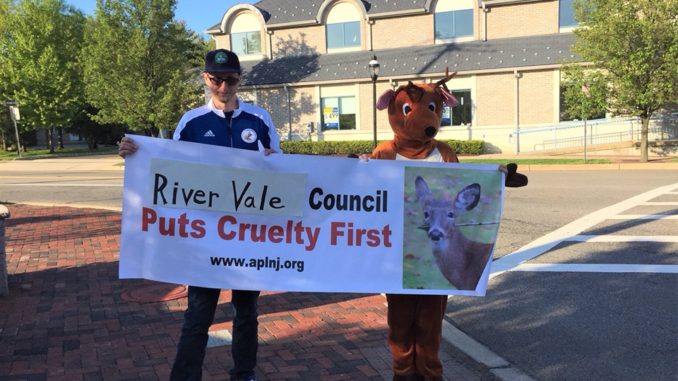
To the editor:
River Vale residents inspire me. At recent mayor and council meetings residents spoke passionately against the deer hunt and would rather the town do nothing. One resident asked if they will kill fawns. This reminded me of the fawn I rescued. While holding the fawn in my arms, I could feel their heartbeat. Don’t let that beat go silent. Others want a referendum. Many public officials aren’t qualified to decide the fate of a deer’s life. The deer population won’t double in one year. The town can honor the residents’ wishes and put pressure on the state to get sterilization approved. We need support from local mayors, freeholders, and state legislators.
Community-based deer kills are ineffective, leading to more killing. Hunting leads to a higher fertility rate in deer, thereby providing a short-term solution. Hunting decreases the population one year and increases it the next year. With competition for food reduced by a sudden drop in population, younger fawns will breed, and females will give birth to twins and triplets instead of single fawns. Bow hunting deer has a 50% wounding rate. Deer can travel for miles before they bleed out. This is a horrific way to die.
I attended the Lyme disease forum at the River Vale Public Library and added important information. This included tick tubes and current statistics showing a decline in Lyme disease in New Jersey and Bergen County in 2018 from 2017, as well as preventative tips recommended by lymedisease.org. Risk of exposure to Lyme disease is correlated with abundance of acorns, mice, and chipmunks—key hosts for subadult ticks and their corresponding food source. Fewer deer does not reduce the risk of contracting Lyme disease. Forest destruction and fragmentation in the U.S. has shown to reduce mammalian species diversity and elevates population densities of white-footed mice. One potential consequence of reduced species diversity and high mouse density in small fragments is an increase in human exposure to Lyme disease.
Many deer–auto collisions are avoidable. The most common causes of auto accidents in the U.S. resulting in personal injury and death are: distracted driving, weather/road conditions, failure to stop or yield at a red light/stop sign, failure to obey traffic laws, drunk driving, road rage, unsafe speed, reckless/careless driving, teenagers and tailgating. Deer were not on this list.
Pascack Valley residents share the deer and support River Vale businesses, let’s come together on a nonlethal plan.
